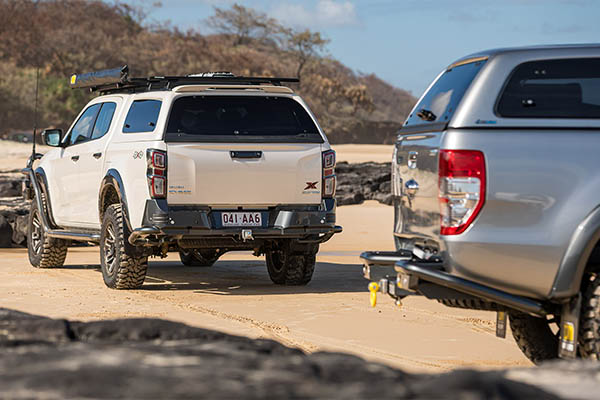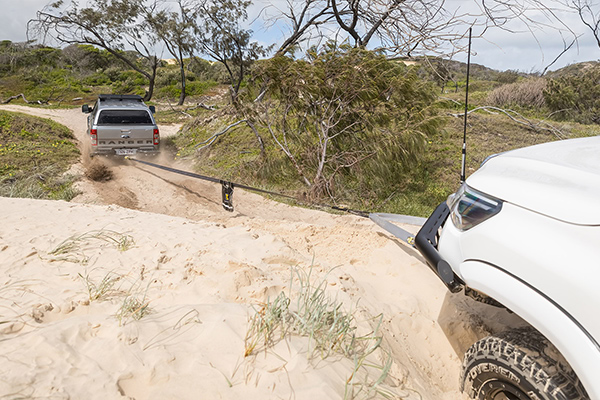The Underrated Benefits of a Rear Step Tow Bar
Rear step tow bars protect the back of your vehicle while also giving you towing capability, but there are also some lesser-known benefits to these clever bars that most off-road tourers never consider.
Before we talk about their more hidden uses at the end, let’s run through the three more standard perceptions of why a high-quality rear step tow bar is a useful 4x4 accessory:
Rear of vehicle protection
The back of your vehicle is often ‘out of sight, out of mind’, which can actually make it more susceptible to damage than the front of your rig. With that in consideration, a rear step tow bar – which are often constructed from strong steel tubing – is an easy way to protect the back of your vehicle from various impacts, ranging from traffic incidents to rogue shopping trolleys. Beyond this, when you’re overcoming obstacles off-road, your vehicle’s approach and departure angles come into question. A rear step tow bar protects rear panels from underneath as well, while quality versions are designed to give your 4x4 optimal departure angles.

Towing capability
Whether you’re pulling a box trailer, a camper trailer, a van or otherwise, most four-wheel drives will do some form of towing during their lifetime. Quality bars are ADR62 certified, meet Class 4 Heavy Duty tow bar standards to ensure they’re safe for your towing purposes, as well as having 7 or 12-pin fitments and off-road trailer and Anderson plug mounting options. With these features, you can hook up what you need without a backward glance.
Rear of vehicle access
Utes, especially when they’re fitted with a canopy, can be tricky to access all areas of your cargo space. A rear step tow bar fitted with a strong flat platform, such as an alloy treadplate, can make it easier and safer to reach all areas of the back of your 4x4. Perhaps more importantly, a rear step tow bar makes loading, accessing and unloading roof-loaded cargo as simple as possible.
Hi-Lift jacking points
A Hi-Lift jack is far from the most used recovery tool, but it can be a crucial one when circumstances call for it. Reputable bull bars are compatible with recovery jacks, however having the choice of using a recovery jack from the front or the rear is a welcome one to have. TJM rear step tow bars come with two T-slot recovery jack points, which are compatible with the TJM recovery jack.
With that said, snatch strap and winch recoveries that don’t require the involvement of a recovery jack are the most common types of recoveries – which brings us to the most underrated function of a high-quality rear step tow bar.
Rear point of recovery
Vehicle recoveries, in the majority of cases, are an unexpected part of the journey. This is why it’s always recommended that you have rated recovery points fitted to your 4x4, as you can’t guarantee you won’t need to recover yourself or others when you hit the tracks. More than that, though, it means you don’t actually get a choice of how and where you get stuck, so it’s not always possible to use the recovery points on the front of your rig. In those situations, having a rear point of recovery can range from being helpful to essential.
Basically, with a 50 mm recovery hitch attached to a properly rated rear step tow bar, you can transform your rear step tow bar into a rear of vehicle recovery point, which can come in handy both as the recovery vehicle and the stuck vehicle. In fact, in a large number of snatch strap recoveries, it would be considered safer and/or best practice to use a rear point of recovery on both vehicles involved in the recovery.
With all of the above in mind, a rear step tow bar might just jump up your priority list of accessories to fit to your 4x4 before you next leave the blacktop.



